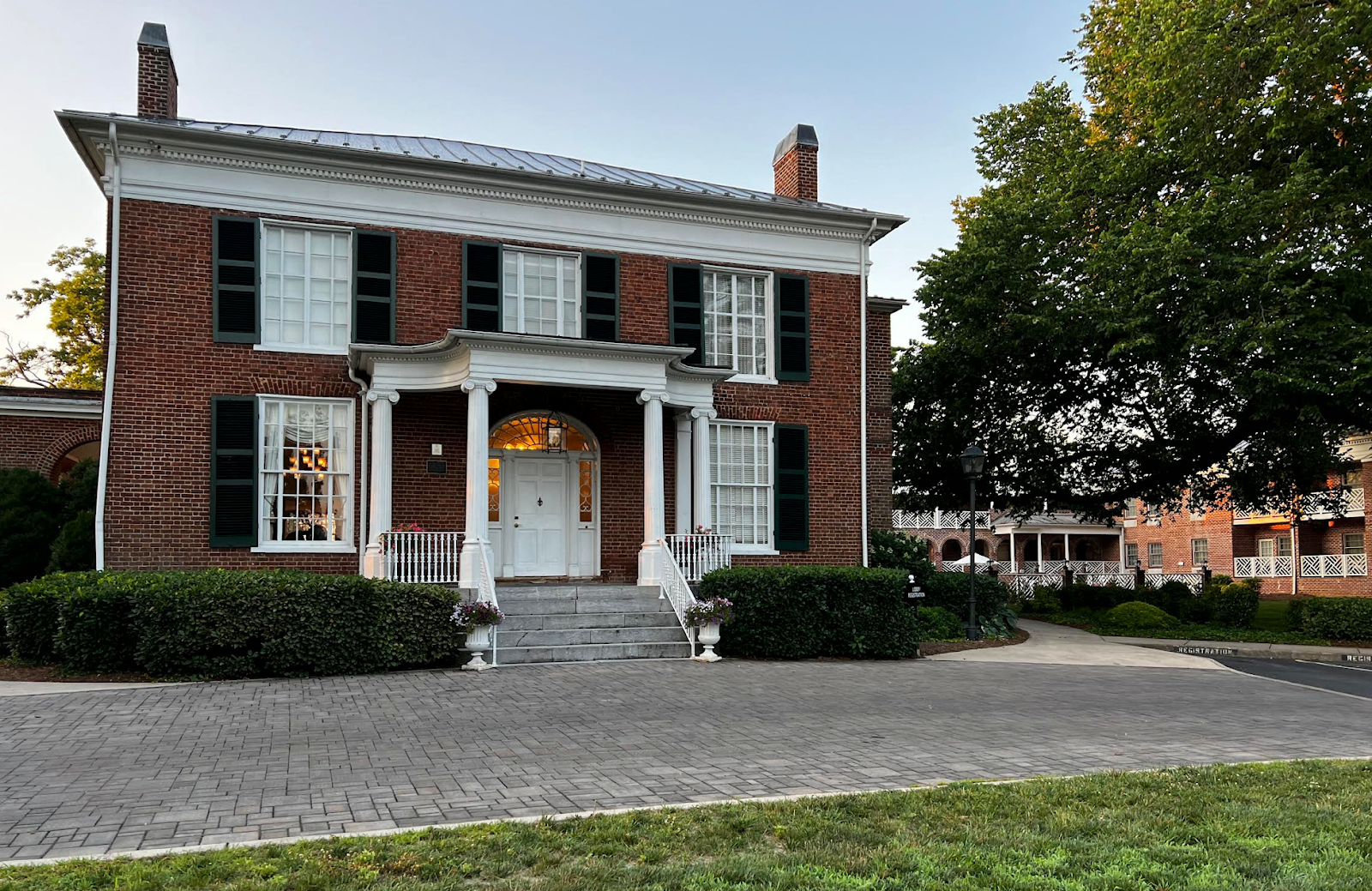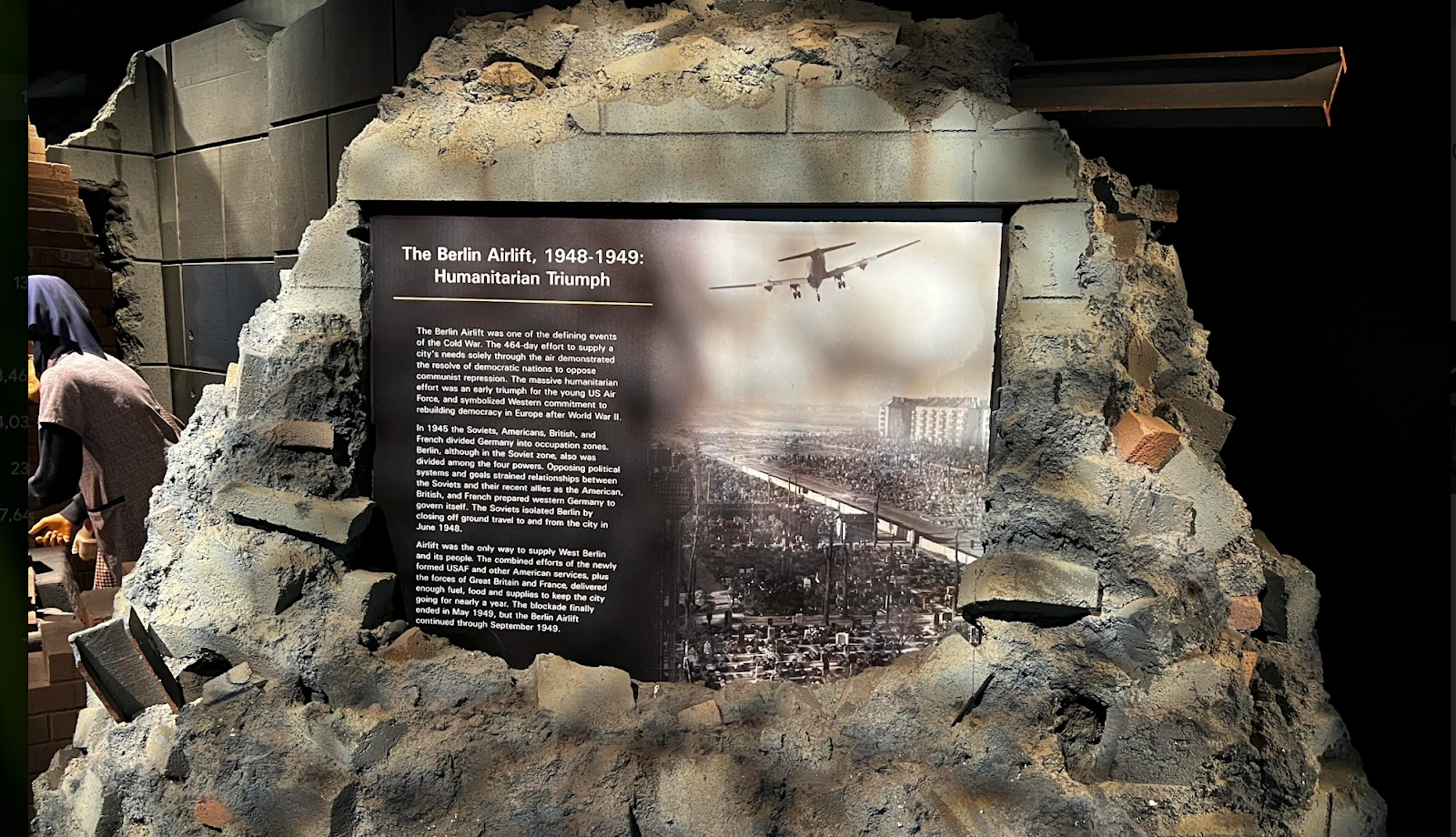It’s the middle of July and we thought it would be fun to go see Marg and Bill in Tobermory, Ontario, Canada. So that’s where we’re headed for a few days. We’re going to see sights along the way and see some extended family and friends too.
Wednesday afternoon, we departed home and arrived in Lexington, VA. It’s a place we’ve been to many times over the years. Lexington is right on I-81 and we like the town a lot. Sometimes it was in the Roadrunner and the last couple of years the town has been a stopover in our truck.
We drove about 4 1/2 hours checked into our hotel and went to dinner. We had lots of choices and decided on a Japanese restaurant. I got sushi and sashimi and Pam had chicken teriyaki. We frequent Nara Sushi in Viriginia Beach so it is the benchmark we measure all other Asian cuisine.
Lexington VA is quite an historic town with Washington and Lee University, Virginia Military Institute, the
George C. Marshall Foundation Museum, as well as the gravestone, stature and home of Stonewall Jackson.
It also is the home of a unique Hampton Inn where we stayed which is on site of Col Alto Mansion.
Thursday, our journeys took us from Lexington VA to Dayton Ohio. After rest stops, a fuel stop, lunch (sandwiches Pam made with fixings from the cooler we carry with us), we arrived about 2 pm. We made our way directly to the National Museum of the Air Force.
We visited it years ago back in our RV days and wanted to see more of it again. It was utterly fantastic. Over the years it has been expanded and somehow is even better than it was. It was overwhelming to try and absorb it all. So we picked out a few things to see and enjoyed it thorughly.
The many displays are contained in four large hangers (with World War II, SouthEast Asia, Cold War and a Presidential Gallery).
F-22 Raptor
One of the “drones” which was huge! These are nothing less than pilotless airplanes flown by remote control. Astounding. Back in the early 1980’s they used to be called "Unmanned Aerial Vehicles - UAVs".
The SR-71 - always a highlight
We wandered over to a display of the Space Shuttle and it resolved one of the great mysteries of space travel for me-- I always wondered, “How do those astronauts go to the bathroom?” Answer: vacuum technology in weightlessness on a “regular” toilet seat. Enough said on that subject.

Space Shuttle toilet
We also wanted to see the Presidential Gallery. We walked through Harry Truman’s airplane and also the one that JFK used during his short-lived presidency.
A twinge of nostalgia. My dad was stationed family at Presque Isle AFB, ME and we lived there from 1955-1958.
It was part of the Cold War’s USAF Strategic Air Command which had the “lightening bolt/iron fist” insignia. As a 4-5 year old I remember we’d go on and off base in our car and I remember the sticker on the corner of the windshield indicating it was register on base.
The Air Police would see the SAC sticker, check my dad’s military ID card, he would get saluted and we’d get onto base. There was something solemn and mesmerizing about the whole routine.
We had another trip down memory lane at the museum. Pam and I were stationed in Germany from 1980-1983 and had the chance to visit both East and West Berlin. As you know, after WW II Berline was portioned off into what become East and West Berlin.
The Cold War Gallery had quite a lot of interesting information on the Berlin Airlift following World War II from 1948-1949.
The Soviets blockade Berlin allowing no transportation to / from the city stranding the city residents in an attempt to take full control of the city after it was portioned into four sectors (US, Britain, France and the Soviet Union). Read more about it
here.
We’re off to a great start, have had good weather and are enjoying our travels. Thanks for joining us on the continuing adventures of the Roadrunner Chronicles!




















































